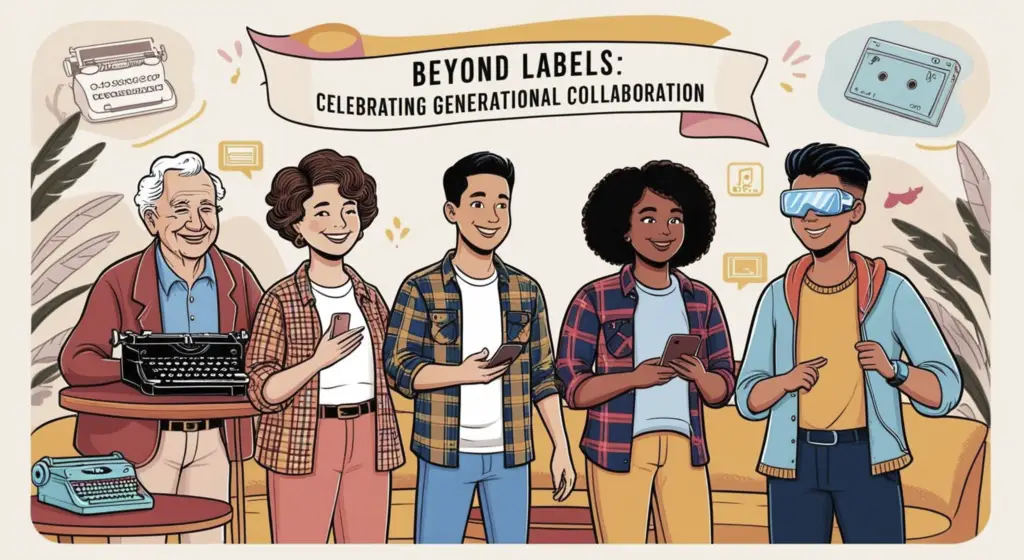Generational labels like Baby Boomers, Generation X, Millennials, and Generation Z can serve important purposes in some contexts but also risk oversimplifying the rich complexity of individual lives. Researchers, marketers, and policymakers have often used these labels to segment data, track trends, and better understand how broad historical and cultural events might shape a cohort’s outlook. For instance, the impact of the internet’s rise on Millennials or the effects of the Cold War on Baby Boomers offer partial explanations for why each generation may share certain values or attitudes. In the workplace, human resources teams sometimes tailor policies around these insights. They might, for example, offer flexible work arrangements and mentorship programs to appeal to the younger, technology-focused mindset of Gen Z employees while also providing retirement-focused benefits for Baby Boomers nearing the end of their careers.
That said, generational labels can quickly become a double-edged sword. By categorizing individuals primarily by their birth years, organizations and communities may inadvertently overgeneralize or stereotype them. It is easy to slip into narratives of “entitled” Millennials or “workaholic” Boomers, thus missing the subtle differences shaped by factors like socioeconomic status, culture, or geography. In truth, being born in a particular year does not guarantee a person will share any specific outlook beyond what broader historical shifts may encourage. Additionally, people on the “border” between two generations might have experiences and values that align more with one cohort than the other, blurring the neat distinctions these labels imply.
Generational language can also create unintended divisions. Emphasizing differences through phrases like “Ok Boomer” or “Lazy Millennial” can harm workplace unity, fuel age-based bias, and reduce collaboration across age groups. This effect can trickle down into everyday relationships and interactions, overshadowing the simple reality that personal life stage—such as starting a family, pursuing higher education, or shifting careers—often matters more than the year someone was born. Furthermore, focusing too narrowly on generational identity might cause managers, team leaders, and marketers to overlook the deeper drivers of behavior. Economic conditions, educational opportunities, or particular cultural norms frequently shape an individual’s decisions more profoundly than does membership in any generational cohort.
At the same time, recognizing generational differences need not be dismissed altogether. There is value in appreciating how people’s formative experiences can shape their worldview or preferences. Being aware that one group might have grown up in an era of widespread economic prosperity, while another was steeped in social media and rapid technological change, can improve empathy and guide meaningful policies. The key lies in using these categories as a broad starting point rather than a rigid framework. Team-building efforts, for instance, might begin by acknowledging that different age groups can have varied communication preferences or typical concerns, but it should not end in assumptions that homogenize the personalities within each cohort.
A more nuanced approach is to recognize that every generation spans a wide spectrum of personalities, cultural backgrounds, and personal aspirations. Rather than fitting an entire group into a fixed template, one can engage in open dialogue and listen to individual perspectives to discover what truly matters to each person. Organizations and leaders can also encourage intergenerational learning programs where employees of different age groups share knowledge, whether it’s technical expertise gained by younger workers or the institutional memory and experience of older teammates. Such exchanges nurture genuine understanding and help align everyone toward shared goals, rather than emphasizing their differences.
Ultimately, generational labels can be a convenient shorthand for examining how major historic and cultural factors shape large groups of people. Yet they should be used with caution and humility. When wielded carelessly, they risk stereotyping and creating divisions. When handled thoughtfully, they can spark curiosity and empathy about the varied forces that mold someone’s perspective, serving as an entry point to a richer and deeper understanding of each individual’s unique experiences and capabilities. By acknowledging that everyone remains more than just a “Millennial” or a “Boomer” and by combining this awareness with actual listening and engagement, communities and organizations can balance the broad insights these labels can offer with the respect and appreciation each person deserves.

